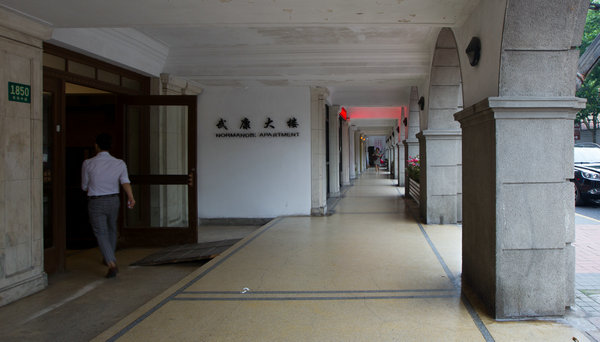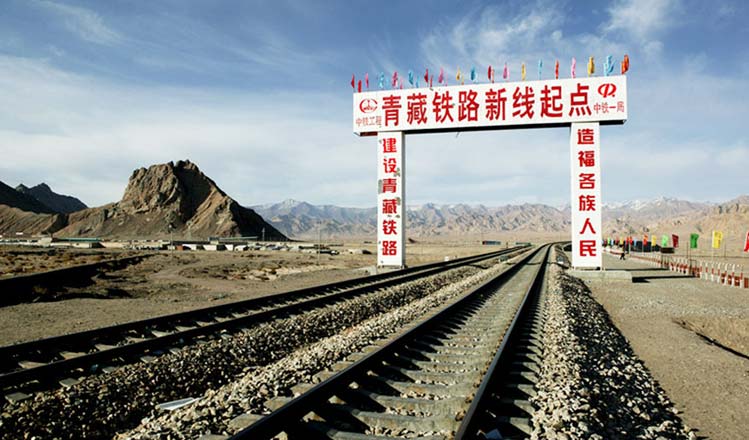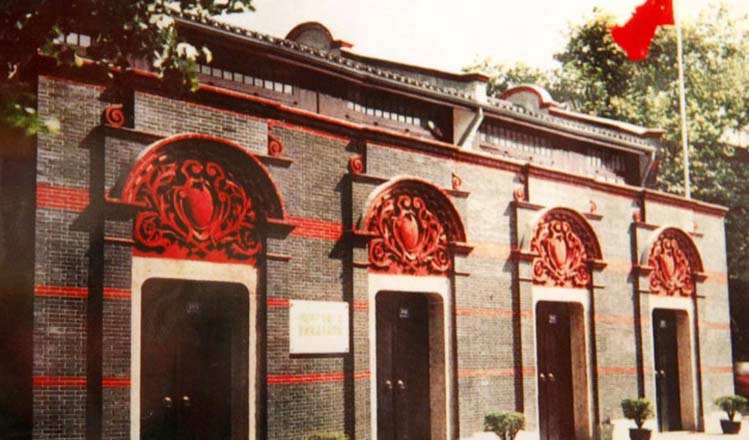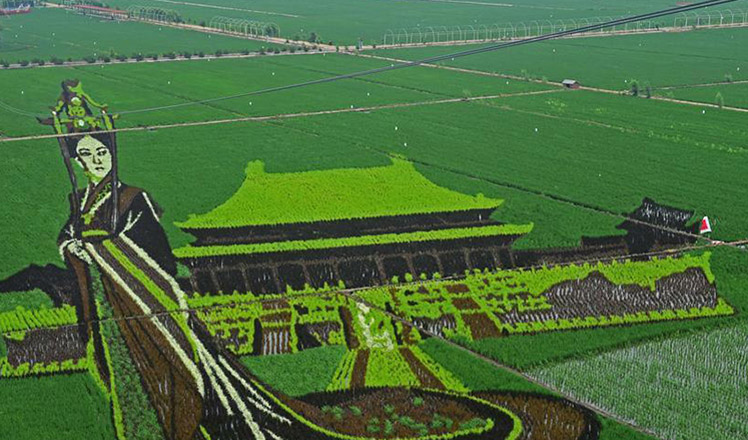Eight grand stories and many more tales
Updated: 2016-07-02 09:34
By Zhou Wenting in Shanghai(China Daily)
|
||||||||
 |
|
At the entrance of the building.[Photo by Gao Erqiang/ China Daily] |
Memories
Like the Hunan sub-district, there are 11 other historical conservation areas in the city. Han Zheng, Party chief of Shanghai, says that it is a weighty responsibility for this generation's urban managers to take all the right steps to safeguard and perpetuate the city's spirit and the memories that go with it.
"In Hunan-subdistrict alone, which covers only 2 square km, there are many outstanding examples of architecture in various styles that have been built over the past 100 years," Han said in May when he visited the subdistrict. "Many have been home to outstanding artists, educators, doctors and authors who have made great contributions to the city and to the country."
Sha Yongjie, a member of the Wukang Building project and professor at the College of Architecture and Urban Planning of Tongji University in Shanghai, says that for architectural aesthetics alone the Wukang Building is of great value.
"The gate of the building is inconspicuous, which is a show of modesty to its surroundings. However, the lobby on the first floor is spacious, as a show of respect to the residents."
Protection
In old communities there has been a push for shikumen, or stone-framed gate houses, to be given protection because they represent an architectural style seen nowhere else in the world.
There were more than 9,000 shikumen complexes in Shanghai when the construction of such houses ended in 1949, and about three in four local residents lived in these red-roofed terrace houses, which also served as factories, banks, newspaper offices and schools, according to municipal records.
Just 173 such complexes escaped being torn down and remain intact in the city, and few hold a city-level historical building status, most being beyond the scope of regulatory protection.
Feng Xiaomin, director of the cultural and historical data committee of the city's political advisory body, says: "It is understandable that some of the dilapidated old complexes need to make way for high-rise office buildings and malls as Shanghai continues to develop as a cosmopolitan financial center, but that does not mean decision makers should be ruled by the logic of giving priority to land development at the expense of these legacies."
In February, a group of the city's political advisers suggested that an application be made to have the iconic houses that once formed Shanghai's most typical residences put onto the world heritage list.
Contact the writer at zhouwenting@chinadaily.com.cn
zhouwenting@chinadaily.com.cn
- Russian Eastern Spaceport shows mutual trust
- UK parties head for leadership battles amid Brexit fallout
- Special Syria envoy plans for July talks, August political transition
- Double suicide attacks kill at least 28 in Cameroon
- Turkey in mourning for 42 killed in deadly assault on Istanbul airport
- Brazil could dismiss Rousseff the day before Olympics ends

 Tenth birthday of the world's highest altitude train line
Tenth birthday of the world's highest altitude train line
 Crucial moments in the history of the CPC
Crucial moments in the history of the CPC
 Chibi Maruko-chan 25th anniversary exhibition
Chibi Maruko-chan 25th anniversary exhibition
 Turkey in mourning for 42 killed in assault on airport
Turkey in mourning for 42 killed in assault on airport
 China's future film stars take graduation photos
China's future film stars take graduation photos
 Russian Eastern Spaceport shows mutual trust
Russian Eastern Spaceport shows mutual trust
 Chinese Olympic team's uniforms unveiled in Beijing
Chinese Olympic team's uniforms unveiled in Beijing
 Paintings on paddy fields in Shenyang, NE China
Paintings on paddy fields in Shenyang, NE China
Most Viewed
Editor's Picks

|

|

|

|

|

|
Today's Top News
Abe's blame game reveals his policies failing to get results
Ending wildlife trafficking must be policy priority in Asia
Effects of supply-side reform take time to be seen
Chinese State Councilor Yang Jiechi to meet Kerry
Chinese stocks surge on back of MSCI rumors
Liang avoids jail in shooting death
China's finance minister addresses ratings downgrade
Duke alumni visit Chinese Embassy
US Weekly

|

|







